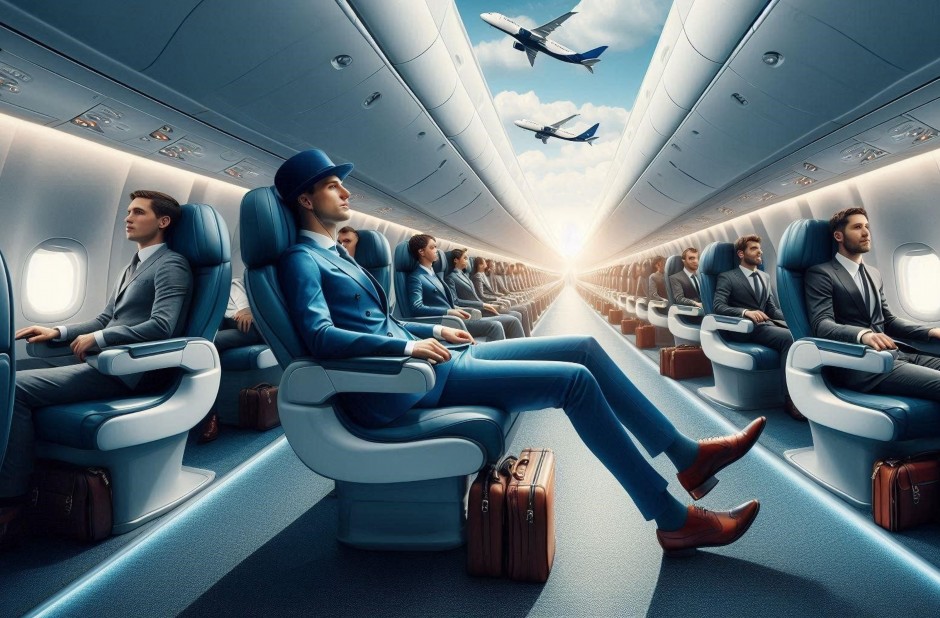The aviation industry is experiencing a significant shift as airlines increasingly recognize that passenger comfort directly impacts customer satisfaction and loyalty. After years of cramped seating and minimal legroom becoming the norm in economy class, many carriers are now reversing this trend by offering more spacious seating options that bridge the gap between standard economy and premium business class.

The Evolution of Economy Class Seating
For decades, airlines focused primarily on maximizing passenger capacity by reducing seat pitch and width to fit more travelers on each flight. This approach led to the notorious "cattle class" experience that many passengers have come to expect from economy travel. However, changing consumer expectations and increased competition have forced airlines to reconsider their seating strategies.
Historical Context
Traditional economy class seats typically offered between 28-31 inches of legroom, with some budget carriers reducing this to as little as 26 inches. The industry's race to the bottom in terms of comfort reached a tipping point when passenger complaints about cramped conditions began affecting airline reputations and customer retention rates.
Major Airlines Leading the Change
Premium Economy Revolution
Several major carriers have introduced premium economy sections that offer significantly more legroom while maintaining economy-class pricing structures. These initiatives include:
- American Airlines: Introduced "Premium Economy" with 38 inches of legroom, wider seats, and enhanced meal service
- Delta Air Lines: Offers "Comfort+" seating with up to 4 additional inches of legroom and priority boarding
- United Airlines: Provides "Economy Plus" with extra legroom and complimentary alcoholic beverages
- JetBlue: Features "Even More Space" seats with up to 7 additional inches of legroom
International Carriers Setting Standards
European and Asian airlines have also embraced the trend toward more comfortable economy seating. Singapore Airlines, Emirates, and Lufthansa have all introduced premium economy cabins with enhanced legroom, while maintaining competitive pricing that appeals to budget-conscious travelers seeking additional comfort.

Factors Driving the Change
Consumer Demand and Satisfaction
Passenger surveys consistently show that legroom ranks among the top factors affecting flight satisfaction. Airlines have discovered that offering more spacious seating options can significantly improve customer loyalty and willingness to pay premium prices for enhanced comfort. This shift represents a move away from the purely cost-driven model toward a more balanced approach that considers passenger experience.
Competitive Differentiation
As the airline industry becomes increasingly commoditized, carriers are seeking ways to differentiate themselves from competitors. Offering superior legroom in economy class has become a key differentiator that airlines use in their marketing campaigns and customer acquisition strategies.
Types of Enhanced Economy Options
Premium Economy Cabins
These dedicated sections typically offer 34-38 inches of legroom, wider seats, and additional amenities such as enhanced meal service, priority boarding, and increased baggage allowances. Premium economy represents a middle ground between standard economy and business class, catering to travelers willing to pay a moderate premium for significantly improved comfort.
Economy Plus Seating
Many airlines now offer upgraded economy seats within the main cabin that provide additional legroom without the full premium economy experience. These seats typically offer 2-6 inches of extra space and may include benefits like priority boarding or complimentary beverages.
Exit Row and Bulkhead Options
Airlines have also improved their approach to selling exit row and bulkhead seats, which naturally offer more legroom due to aircraft design. These seats are now more readily available for purchase during booking or check-in, allowing passengers to upgrade their comfort level for a reasonable fee.

Impact on Passenger Experience
Health and Comfort Benefits
Additional legroom provides significant health and comfort benefits, particularly on long-haul flights. Passengers can stretch their legs more freely, reducing the risk of deep vein thrombosis and general discomfort associated with prolonged sitting in cramped conditions. The psychological benefits of having more personal space also contribute to reduced travel stress and anxiety.
Productivity and Rest
Business travelers particularly benefit from increased legroom, as it allows them to work more comfortably on laptops or tablets during flight. The additional space also makes it easier to rest and sleep, arriving at destinations feeling more refreshed and productive.
Future Trends and Expectations
Technology Integration
Airlines are increasingly integrating technology with their enhanced seating options, offering power outlets, USB charging ports, and improved in-flight entertainment systems in premium economy sections. This technology integration enhances the overall value proposition of paying for additional legroom.
Sustainability Considerations
As airlines balance passenger comfort with environmental concerns, many are exploring innovative seat designs that maximize legroom while maintaining fuel efficiency. New lightweight materials and ergonomic designs allow for increased passenger space without significantly impacting aircraft weight or fuel consumption.
Conclusion
The trend toward offering more legroom in economy class represents a fundamental shift in airline industry priorities, moving from pure cost optimization toward a more balanced approach that considers passenger satisfaction and long-term customer loyalty. As competition continues to intensify and consumer expectations evolve, airlines that successfully provide enhanced comfort options while maintaining competitive pricing will likely gain significant advantages in attracting and retaining customers. This evolution in economy class seating standards suggests a promising future for air travel comfort, making flying more pleasant and accessible for millions of passengers worldwide.
